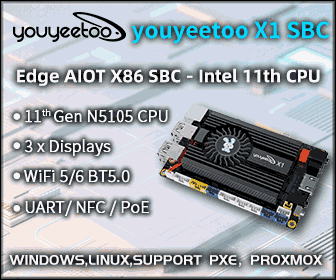Raspberry Pi Codecs and Graphics/Video APIs
The Raspberry Pi Foundation has announced which codecs and API would be supported in the Raspberry Pi. The Raspberry Pi board will support the following Graphics and Video API via a set of closed source libraries that give access to the GPU acceleration features: OpenGL ES 2.0 – OpenGL is a 3D Graphics API defined by the Khronos Group. OpenVG – OpenVG is a 2D vector drawing API also defined by the Khronos Group. EGL – EGL is the interface between Khronos rendering APIs such as OpenGL ES or OpenVG and the underlying native platform window system. OpenMAX IL – OpenMAX supplies a set of API’s that provides abstractions for routines used during audio, video, and still images processing. OpenMAX defines 3 layers, Raspberry Pi library will provide an interface to the IL layer, which provides an interface between media framework such as Gstreamer and a set of multimedia components. […]





